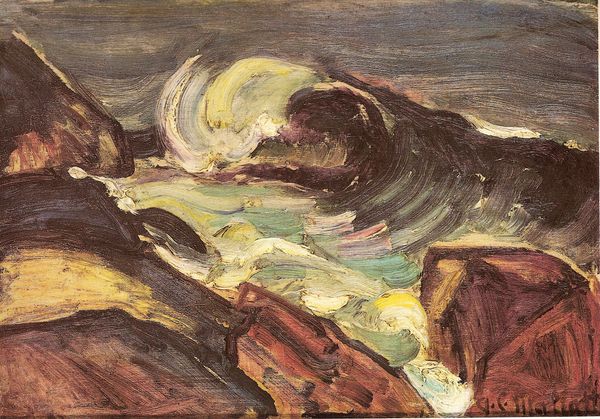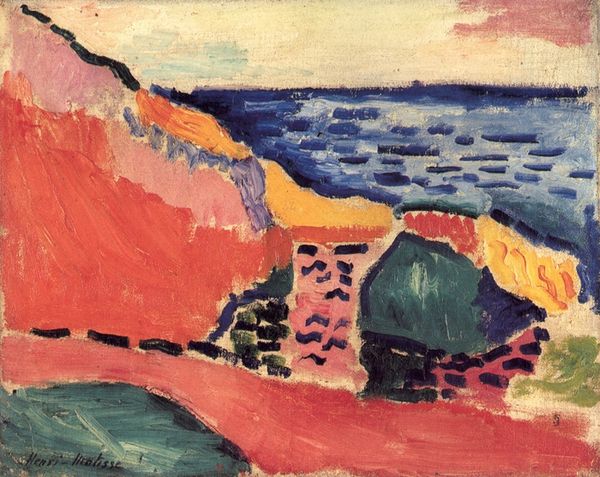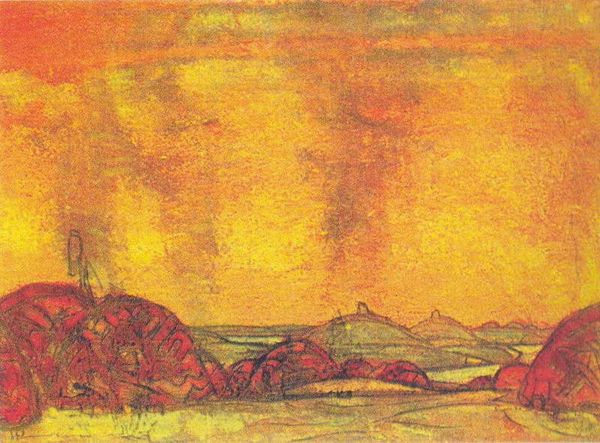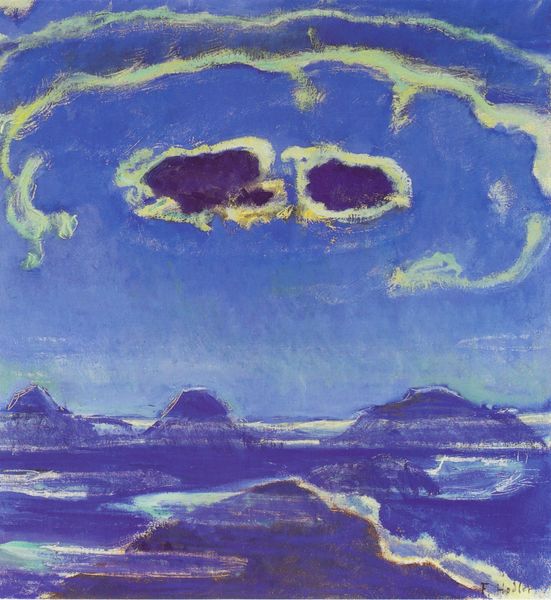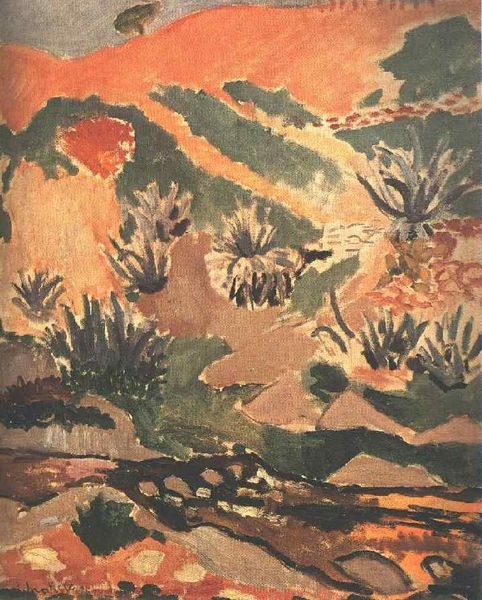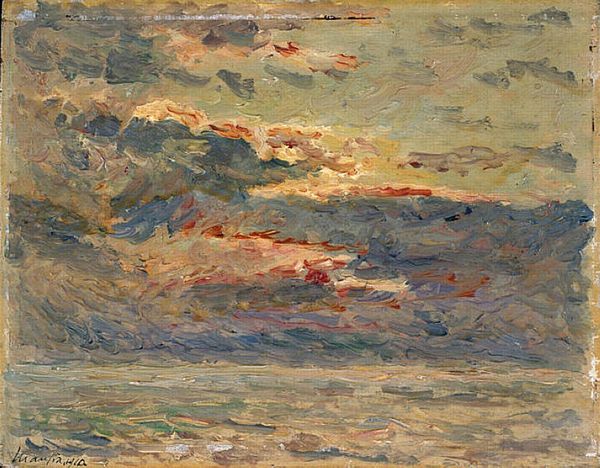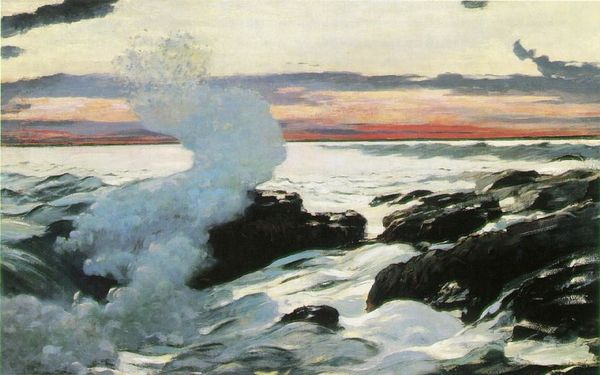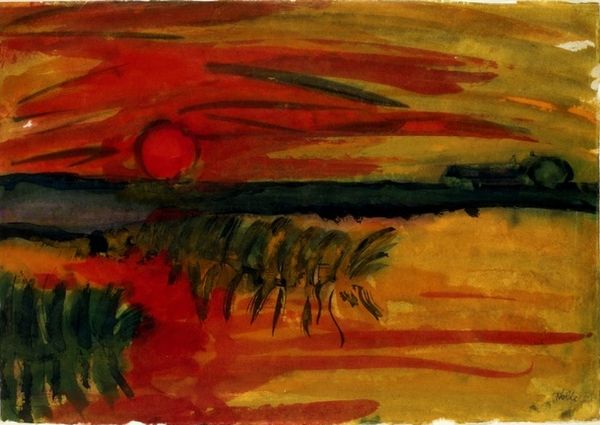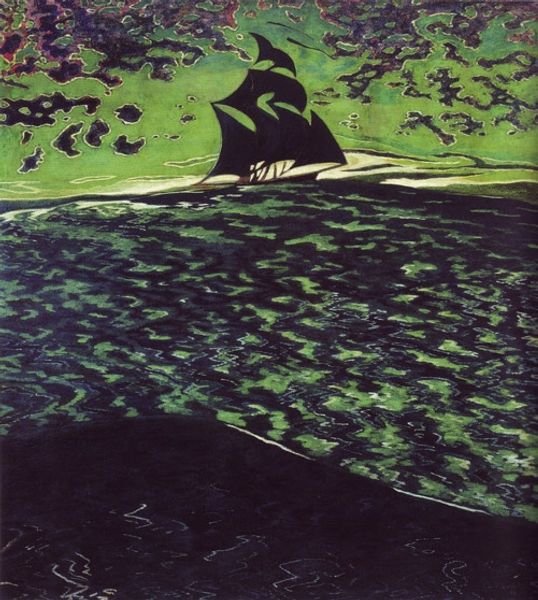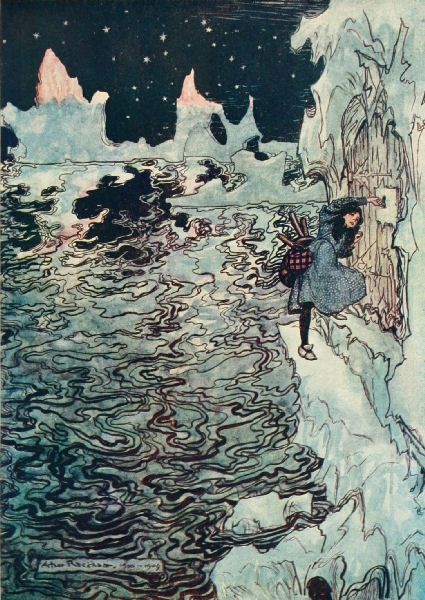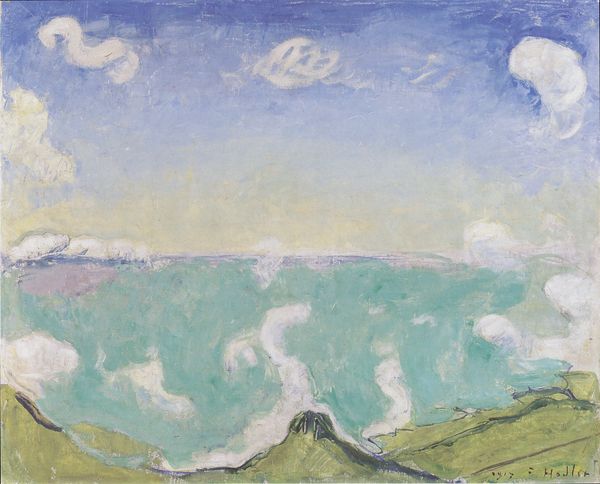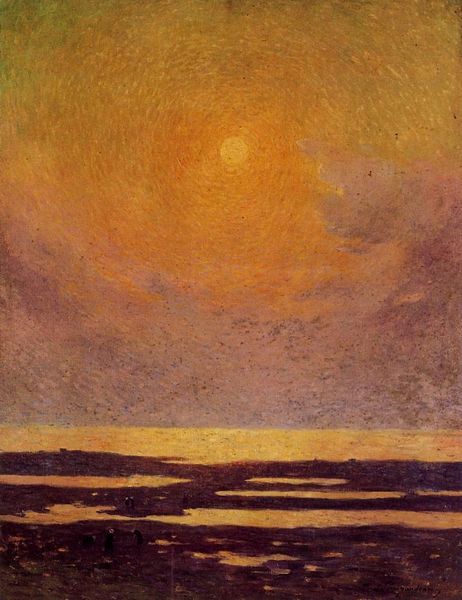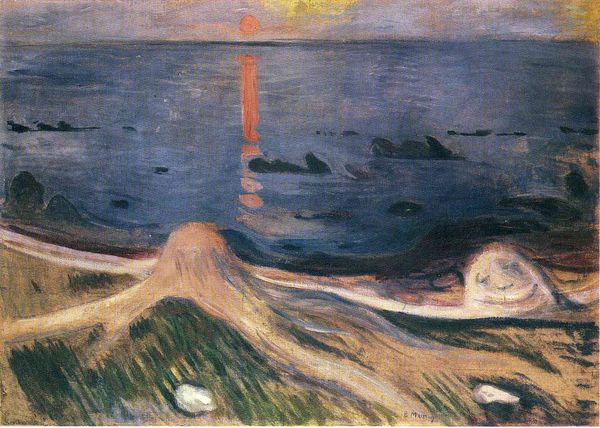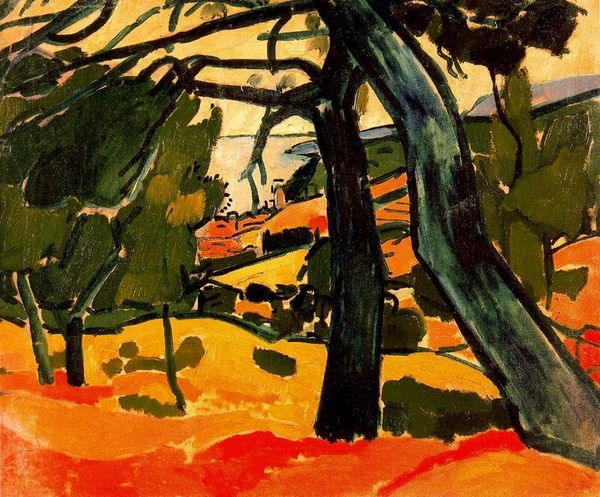
painting, oil-paint, impasto
#
painting
#
oil-paint
#
landscape
#
impressionist landscape
#
figuration
#
impasto
#
post-impressionism
Dimensions: 73 x 92 cm
Copyright: Public domain
Curator: "Beach at Le Pouldu," painted by Paul Gauguin in 1889, is a fascinating study in color and form, even for those familiar with his later, more exotic works. Editor: It strikes me immediately with its stark, almost brutal simplicity. That thick, churning green of the ocean against the ochre sand – there’s a real tension there, a struggle depicted through color. Curator: Absolutely. And that tension extends beyond just color; look at the almost childlike rendering of the waves. There’s a naive quality here, but that simplicity, I believe, directs us to the symbolic undercurrent of the painting. The beach, that meeting place between land and sea, can represent the boundary between the conscious and unconscious mind, a place where dreams meet reality. Editor: Dreams perhaps, or the collision of worlds – specifically, the encroaching modern world impacting Breton culture, which Gauguin was so fascinated by. The intense colors, the almost violent brushstrokes, speak to the disruption and uncertainty of that period. It’s not a peaceful beach scene; it's a landscape charged with historical and social anxieties. Curator: Anxieties that are softened and abstracted by that high vantage point. Notice that we’re positioned to look down upon it. A viewpoint, or an "eye," that reduces the landscape into symbolic zones. Editor: I would say it removes us further from reality by creating a removed perspective. The scale is flattened, perspective warped, everything is mediated through Gauguin's interpretation. That act of filtering has social implications when you think about Gauguin’s own colonial gaze and what was really lost because of the Breton way of life he was interested in preserving through art. Curator: That gaze is ever-present. But beyond the colonial interpretations, let’s not forget the purely emotional force it projects as a symbolic and personal space. In terms of pure imagery, I’m struck by the persistent universality of that shore and horizon; one finds continuity and meaning by experiencing nature in this abstracted style, and perhaps through a perspective one cannot achieve physically in the space depicted. Editor: Fair point. It definitely feels important to also acknowledge those intimate impressions. Gauguin, whatever his own problems and complicities, allows us a glimpse into those struggles he saw. Curator: Exactly, which continues to generate powerful impressions in different ways, as you see, even after over a century. Editor: Precisely, I would go so far as to say that it’s that troubled space – between idealization, representation, and reality – that still makes this painting so compelling today.
Comments
No comments
Be the first to comment and join the conversation on the ultimate creative platform.
